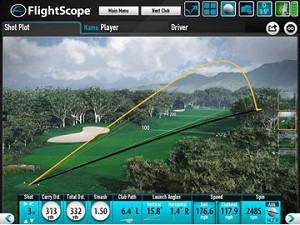Driver Fitting
By Chris Foley
With the advancement and availability of launch monitor technology, and the convenience of adjustable driver heads and shafts, there is no reason a golfer should not be fit when buying a new driver. Driver fitting is all about finding a driver with the loft and shaft that allows you to optimize distance.
The first step in optimizing distance is to measure your club head speed and angle of attach (AoA) with your current driver. Our club head speed and AoA create a “window” of where the ball should optimally launch and spin. From here we can determine optimal carry distance and total distance.
The angle of attack is the vertical (up-down) angle at which the club head is moving through impact relitive to the ground. The angle of attack can be downward (negitive) or level or upward (positive). The longest hitters in golf tend to have a upward angle of attack. One of the biggest influences on a player’s angle of attack is their swing direction. A right handed player whoes swing direction is to the right will tend have a more positive angles of attack. A players with a swing driection to the left will tend to have a negitive angle of attack.
The biggest effect on launch angle is the loft of the club. For a player who is hitting the ball in the center of the clubface launch angle will increase/decrease as loft is added/subtracted. Shots hit low on the face will launch lower than centered hits. Shots hit high on the face will launch higher.
Spin is influenced by loft as well as the shaft. Generally, the more loft the greater the spin rate. There are several aspects of the shaft that affect spin. Spin will tend to increase with a softer shaft and drop with a stiffer shaft. Lighter weight shafts tend to increase spin and heaver shafts tend to decrease spin. Tip stiffness and torque will also impact spin rate.
The spin rate will also be affected by where the ball hits on the clubface. Shots hit low on the face will have more spin and shots hit high on the face tend to decrease spin.
Another factor that needs to be considered in driver optimization is the landing angle of the golf ball. We want the ball to carry optimally, but we also need the ball to roll out to maximize distance. To achieve maximum roll the ball needs to land at an angel of less than 38%. At that angle of decent the ball will roll and not stop.
To optimize distance, the club head (loft) and the shaft must be married together. The best way to do this is with a qualified club fitter who uses a launch monitor such as TrackMan or FlightScope. Utilizing the data provided by the launch monitor, the fitter can match the correct shaft and loft combination that will maximize distance and performance.



